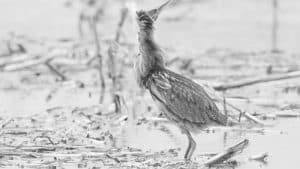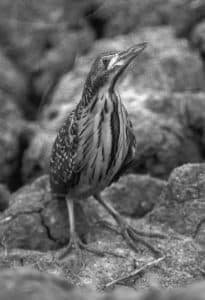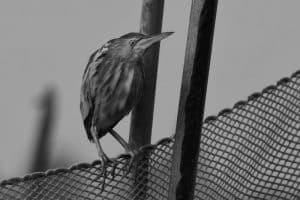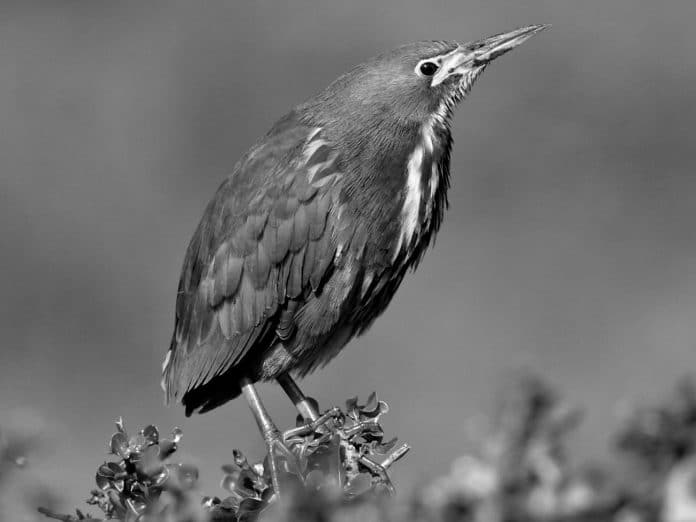Introduction to Bitterns in Tanzania
Tanzania, renowned for its stunning landscapes and diverse wildlife, is home to a remarkable avian species that captivates the hearts of birding enthusiasts – the bittern. These elusive and majestic birds inhabit the wetlands and marshes of Tanzania, adding to the country’s rich biodiversity. Bitterns belong to the heron family and are known for their secretive nature, making them a fascinating subject for observation and study. As a wildlife enthusiast, exploring the world of bitterns in Tanzania promises an unforgettable experience, offering a glimpse into the hidden beauty of these remarkable birds.

The wetlands and marshes of Tanzania provide a haven for a variety of bird species, including the enigmatic bitterns. These diverse habitats, ranging from the Serengeti’s grasslands to the lush wetlands of the Rufiji River basin, offer ideal environments for bitterns to thrive. The presence of extensive reed beds, shallow water bodies, and abundant aquatic vegetation creates the perfect setting for these elusive birds to forage and nest. By understanding the unique habitats that support bittern populations in Tanzania, wildlife enthusiasts can embark on an enriching journey to witness these birds in their natural environment.
The Habitats of Bitterns in Tanzania
Tanzania is home to several species of bitterns, each adorned with its distinct plumage and characteristics. Among the notable species found in Tanzania are the Eurasian bittern (Botaurus stellaris), the African bittern (Ixobrychus sturmii), and the lesser bittern (Ixobrychus minutus). These remarkable birds exhibit a range of sizes, with the Eurasian bittern being the largest and most impressive in appearance, while the lesser bittern is notably smaller and more secretive in its behavior. Understanding the different bittern species found in Tanzania enables enthusiasts to identify and appreciate the unique attributes of each bird, adding depth to the experience of encountering them in the wild.
Behaviors and Characteristics of Bitterns
Bitterns are renowned for their cryptic behavior, utilizing their mottled plumage to blend seamlessly into their wetland habitats. Their remarkable camouflage and stealthy movements make them challenging to spot, further enhancing the allure of observing these birds in the wild. Bitterns are primarily crepuscular, meaning they are most active during the twilight hours, adding an element of mystery to their behavior. Their distinctive booming calls resonate across the marshes, serving as a signature feature of their presence. Understanding the behaviors and characteristics of bitterns is essential for wildlife enthusiasts seeking to immerse themselves in the world of these elusive birds.
Conservation Efforts for Bitterns in Tanzania
The wetlands and marshes of Tanzania, vital habitats for bitterns, face increasing threats from human activities, including habitat destruction, pollution, and unsustainable development. These challenges have significant implications for the survival of bittern populations, necessitating concerted conservation efforts to safeguard their future. Organizations and conservation groups in Tanzania are actively involved in initiatives aimed at preserving the wetland ecosystems and protecting the biodiversity they support, including the conservation of bitterns. By supporting these conservation endeavors, wildlife enthusiasts can contribute to the preservation of the habitats that sustain these magnificent birds, ensuring that future generations have the opportunity to appreciate their beauty.
Best Locations for Bittern Watching in Tanzania

Tanzania offers a multitude of prime locations for observing bitterns in their natural habitat, providing wildlife enthusiasts with an array of opportunities to encounter these captivating birds. The Selous Game Reserve, with its expansive wetlands and diverse birdlife, stands out as a premier destination for bittern watching. The Rufiji River basin, which traverses the reserve, is teeming with bird species, including bitterns, making it an ideal setting for immersive wildlife encounters. Additionally, the Lake Manyara National Park, characterized by its picturesque lake and surrounding wetlands, is another notable hotspot for observing bitterns. These locations, among others, offer an enriching experience for wildlife enthusiasts seeking to witness the elusive beauty of bitterns in Tanzania.
Tips for Spotting Bitterns in Tanzania
Spotting bitterns in the wild requires patience, keen observation, and an understanding of their behavior and preferred habitats. When embarking on a bittern-watching expedition in Tanzania, it is essential to arrive at the wetlands during the early morning or late evening, as these are the times when bitterns are most active. Quietly positioning yourself near reed beds or shallow water bodies, where bitterns typically forage, increases the likelihood of spotting these elusive birds. Utilizing binoculars or a spotting scope enhances your ability to scan the wetland surroundings and detect the subtle movements of bitterns. By exercising patience and maintaining a respectful distance, wildlife enthusiasts can increase their chances of encountering bitterns in their natural environment.
Photography and Bittern Watching
Capturing the allure of bitterns through photography adds an extra dimension to the experience of observing these birds in Tanzania’s wetlands. To effectively photograph bitterns, it is crucial to prioritize stealth and patience, allowing the birds to acclimate to your presence without causing disturbance. Positioning yourself strategically near their foraging grounds or nesting sites provides opportunities for capturing intimate moments and behaviors. Utilizing telephoto lenses and maintaining a low profile enables photographers to document the intricate details of bittern plumage and behavior without disrupting their natural activities. By approaching photography with a respectful and unobtrusive approach, enthusiasts can create stunning visual narratives that celebrate the elusive beauty of bitterns in Tanzania.
Cultural Significance of Bitterns in Tanzania
Bitterns hold cultural significance in Tanzania, where they are revered for their association with wetland ecosystems and the natural balance they symbolize. In various local traditions and folklore, bitterns are revered as symbols of resilience and adaptability, embodying the harmony between humanity and the natural world. Their haunting calls and cryptic presence have inspired stories and myths that celebrate the enigmatic nature of these birds. Understanding the cultural significance of bitterns provides a holistic perspective on their importance in Tanzanian society and fosters a deeper appreciation for their role in the country’s natural and cultural heritage.
Conclusion

Exploring the world of bitterns in Tanzania offers a captivating journey into the realm of these enigmatic birds, unveiling their elusive beauty and the vital role they play in the country’s wetland ecosystems. By delving into their habitats, behaviors, and conservation status, wildlife enthusiasts gain a profound understanding of the significance of preserving these remarkable birds and their natural environments. Embracing the tips for spotting and photographing bitterns enhances the potential for immersive and rewarding wildlife encounters, creating lasting memories of their elusive allure. As you venture into the wetlands of Tanzania in search of bitterns, you embark on a profound exploration of nature’s hidden treasures, enriched by the cultural significance and conservation efforts that underscore the enduring legacy of these majestic birds.


































